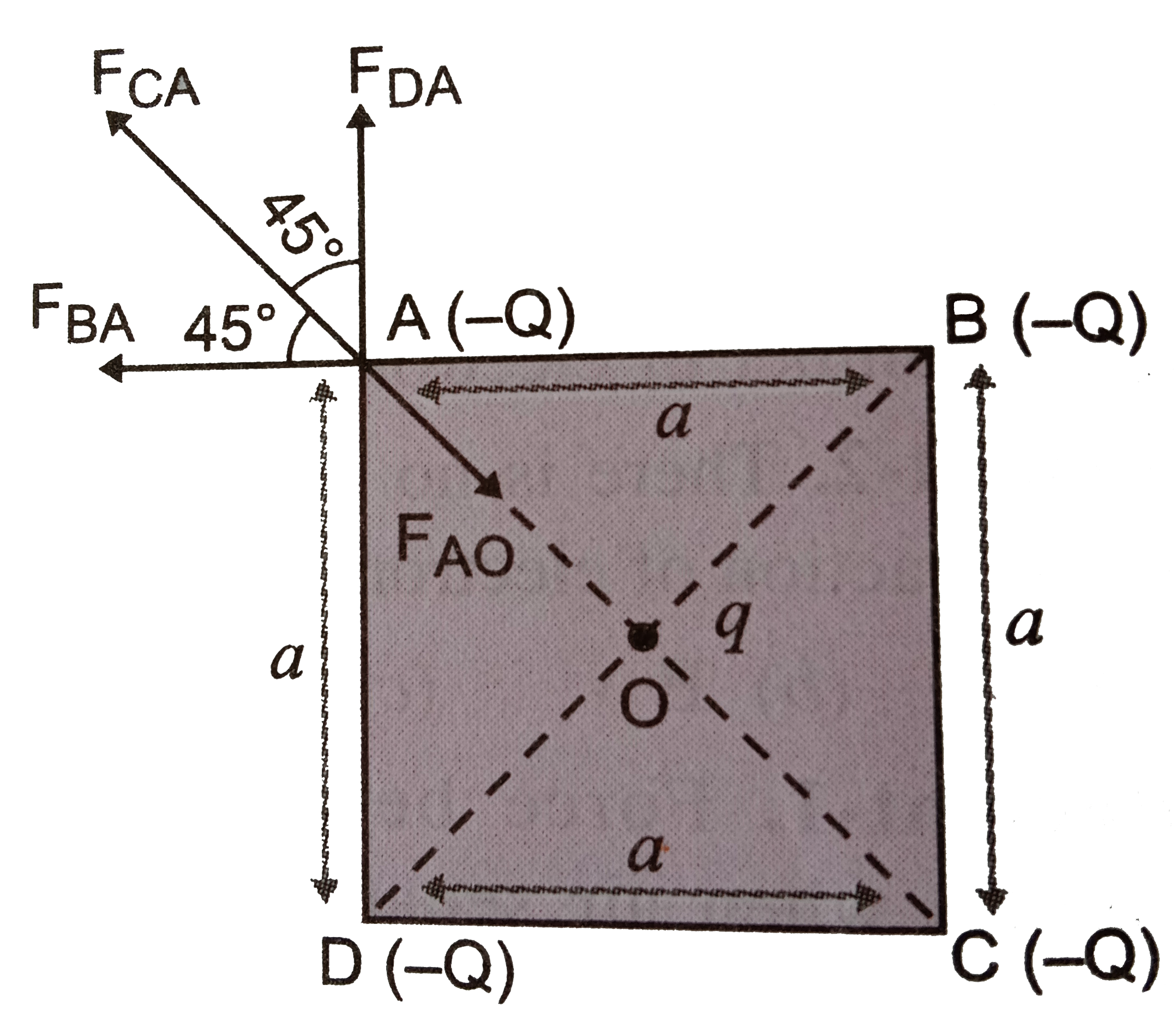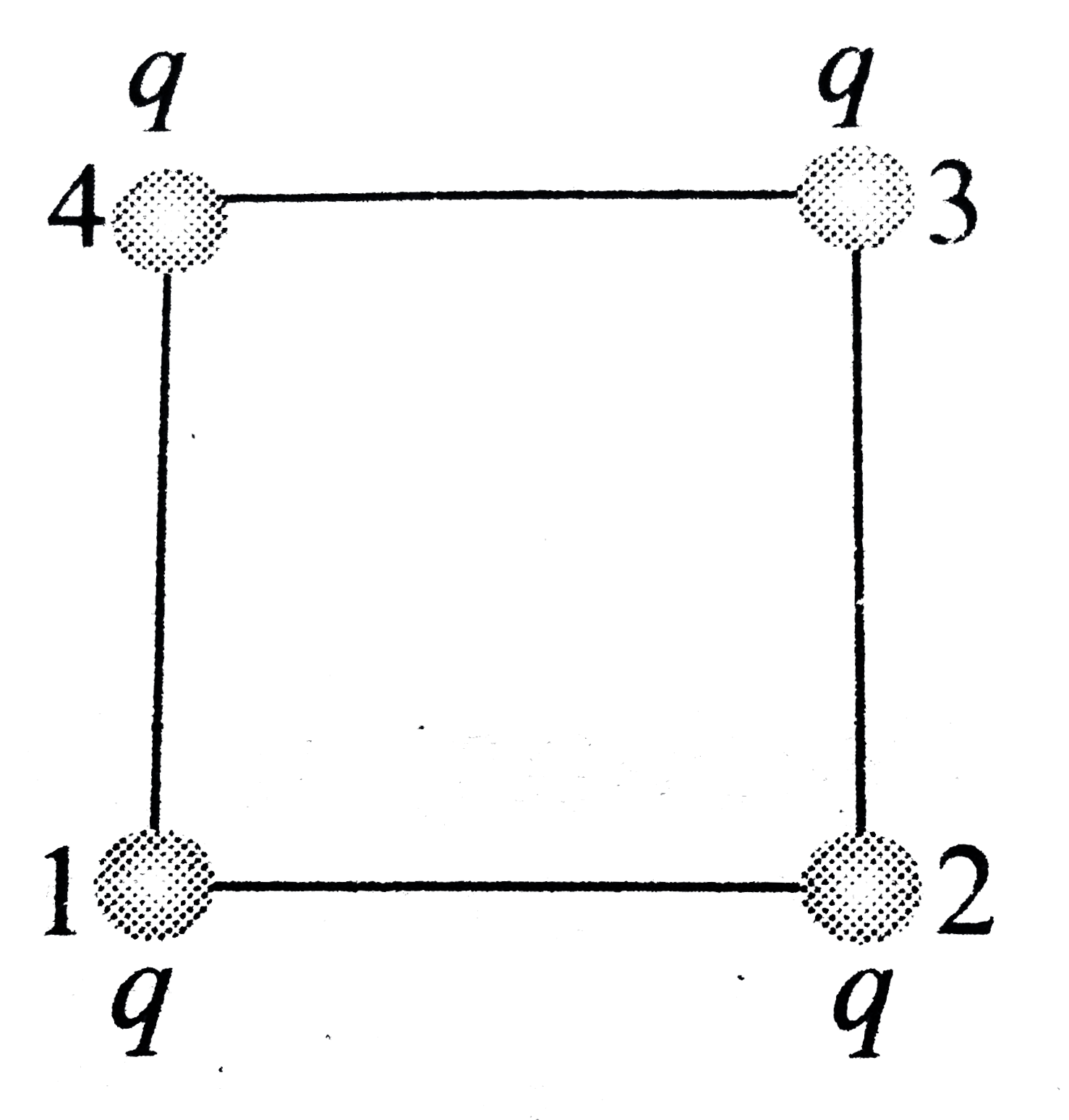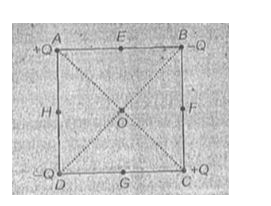Four charges equal to −Q are placed at the four corners of a square and a charge q is at its center. If the system is in equilibrium the value of q is
−Q4(1+2√2)
Q4(1+2√2)
−Q2(1+2√2)
Q2(1+2√2)
The correct Answer is:B
Let us consider charge at A to be in equilibrium

Now FAB=FDA=KQ2a2
and FCA=KQ2(√2a/2)2=KQ22a2
Now FAO=KQq(√2a/2)2=K2Qqa2
for equilibrium all forces along AO should be equal to forces along CA,
FAO=FCA+FBAcos45∘+FDAcos45∘
FAO=FCA+2FBAcos45∘
K2Qqa2=KQ22a2+2KQ2a2×⋅1√2
∴q=Q4(1+2√2)
Topper's Solved these Questions
- BOOK - PRADEEPCHAPTER - ELECTROSTATICSEXERCISE - FILL IN THE BLANKS8videos
ELECTROSTATICS
- BOOK - PRADEEPCHAPTER - ELECTROSTATICSEXERCISE - PROBLEMS FOR PRACTICE8videos
ELECTROSTATICS
- BOOK - PRADEEPCHAPTER - ELECTROSTATICSEXERCISE - VALUE BASED QUESTIONS7videos
ELECTROSTATICS
- BOOK - PRADEEPCHAPTER - ELECTRONIC DEVICESEXERCISE - Fill in the Blanks1videos
ELECTRONIC DEVICES
- BOOK - PRADEEPCHAPTER - MAGNETIC EFFECT OF CURRENT AND MAGNETISMEXERCISE - Competition Focus (Multiple Choice Questions)2videos
MAGNETIC EFFECT OF CURRENT AND MAGNETISM
Similar Questions
Four positive point charges Q are placed at the corners of a square of side a. Calculate the charge that should be placed at the centre so that system remains in equilibrium.
View SolutionFour identical point charges q are placed at four corners of a square of side a. Find the potential energy of the charge system.
 .View Solution
.View Solution
Knowledge Check
- Question 1 - Select One
Four charges equal to −Q are placed at the four corners of a square and a charge q is at its centre. If the system is in equilibrium the value of q is
A(a) −Q2(1+2√2)B(b) Q4(1+2√2)C(c) −Q4(1+2√2)D(d) Q2(1+2√2) - Question 2 - Select One
Four charges equal to −Q are placed at the four corners of a square and a charge q is at its centre, If the system is in equilibrium the value of q si
A−Q4(1+2√2)BQ4(1+2√2)C−Q2(1+2√2)DQ2(1+2√2) - Question 3 - Select One
Four charges equal to Q are placed at the four comers of a square and a charge q is at its centre . If the system is in equilibrium , the value of q is
A−Q4(1+2√2)BQ4(1+2√2)C−Q2(1+2√2)DQ2(1+2√2)
Four identical charges, Q each, are fixed at the vertices of a square. A free charge q is placed at the centre of the square. Investigate the nature of equilibrium of charge q if it is to be displaced slightly along any of the two diagonals of the square.
View SolutionFour charges +Q,−Q,+Q,−Q are placed at the corners of a square taken in order. At the centre of the square
View SolutionFour charges Q-Q, Q-Q are placed at the corners of a square as shown . The potential is zero at points
 View Solution
View SolutionA charge q is placed at the centre of the line joining two equal charges Q. The system of the three charges will be in equilibrium if q is equal to:
View SolutionFour positive charges (2√2−1)Q are arranged at the four corners of a square. Another charge q is placed at the center of the square. Resulting force acting on each corner charge is zero if q is
View Solution

